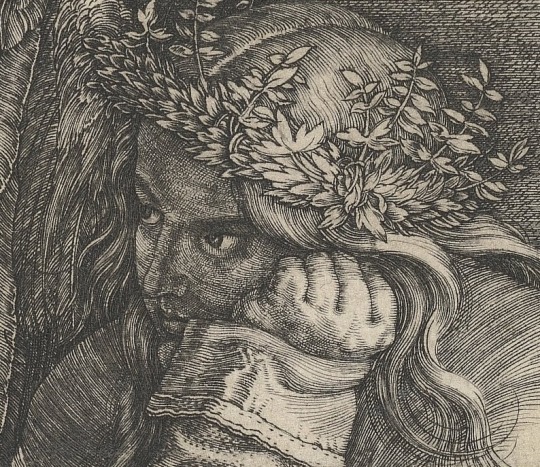Quote
When religion becomes artificial, art has a duty to rescue it. Art can show that the symbols which religions would have us believe literally true are actually figurative. Art can idealize those symbols, and so reveal the profound truths they contain.
Richard Wagner (via sharkchunks)
48 notes
·
View notes
Photo
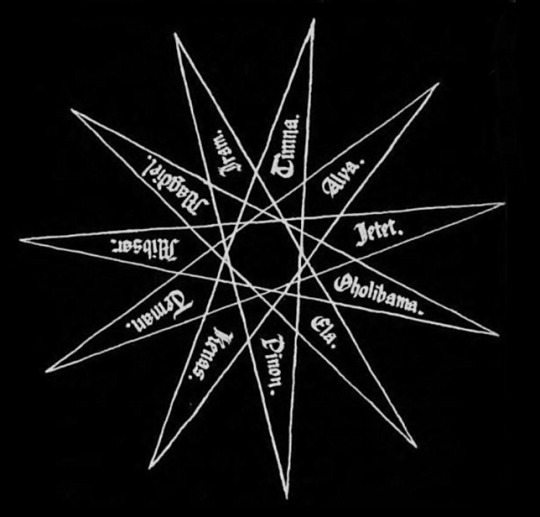
Thomas Karlsson - The Kings of Edom placed on the 11-pointed Star, representing the Qliphoth and their 11 Demonic Rulers, “Qabalah, Qliphoth and Goetic Magic”, 2009.
Kings of Edom were kings over the land of Edom before any Israelite king had conquered it. Qabalists associated these kings with the Evil Primordial Worlds and their Lords. According to the Qabalists, Edom was a kingdom, or a world, which consisted solely of the harsh forces of Geburah. The Zohar tells us that Edom means ‘a kingdom of a severity which is not weakened by any pity’. Theancient lords of Edom were 11 in number, and this number is associated with the principle of Evil in the Bible. In the Genesis 30:40-43 we can find their names: Timna, Alva, Jetet, Oholibama, Ela, Pinon, Kenas, Teman, Mibsar, Magdiel and Iram.
In the Qabalah, these names correspond to the Eleven Demon Rulers who govern the Anti-Worlds of the Evil Side. A Qabalistic text on the most important Demons reveals that both the lords and the kings of Edom are associated with certain Demons: Samael, i.e. Satan, is mentioned as a ruler of Edom. There were certain Qabalistic speculations around the conjectures regarding the kings of Edom certain Demonological traditions liked with the thought that they belonged to the Emanations of the Left Side. Among certain Jews during the early Middle Ages the term ‘Kings of Edom’ was used to denote Christianity, which they believed had developed from the Dark Side.
342 notes
·
View notes
Photo

“The followers of Pythagoras delivered their knowledge to pupils, fitted by selection and by training to receive it, in secret; but to others by numerical and mathematical names and notions. Hence they called forms, numbers; a point, the monad; a line, the dyad; a superficies, the triad; and a solid, the tetrad.
Intuitive knowledge was referred to the Monad type.
Reason and causation was referred to the Dyad type.
Imagination (form or rupa) was referred to the Triad type.
Sensation of material objects was referred to the Tetrad type.
Indeed, they referred every object, planet, man, idea and essence to some number or other, in a way, which to most moderns must seem curious and mystical in the highest degree.“
- Numbers Their Occult Power And Mystic Virtues
By W. Wynn Westcott
“Numbers are a key to the ancient views of cosmogony— in its broad sense, spiritually as well as physically considered and to the evolution of the present human race; all systems of religious mysticism are based upon numerals. The sacredness of numbers begins with the Great First Cause, the One, and ends only with the naught or zero—symbol of the infinite and boundless universe.”
- Isis Unveiled, vol. ii.
289 notes
·
View notes
Text
Nigredo in Alchemy
Alchemy has been called a “proto-chemistry”, but it also had a spiritual nature. Scholars such as C.G. Jung made profound studies about alchemy, finding in it apowerful archetypal symbolism which could give people the possibility of transforming themselves in a deep way. The first step, as they say, it’s the hardest. Human beings reach their free will through self-discovery, but we don’t try to self-discover ourselves until our situation has become so painful that we don’t have any other way than to recreate ourselves. We don’t accept that we must transform our life until we hit rock bottom. This is called the Dark Night of the Soul. This is a process describing a crisis of faith, or of meaning, in which every value in our life is questioned, losing its weight. One feels as if one was wandering in deep, dark labyrinths, without any exit on sight. This process is called in alchemy the nigredo, the black phase.
In alchemical treatises, this phase is represented with images of ravens, skulls, skeletons and dead bodies. The black phase represents the death of the ego, the limited personality of man, and allows for a deeper contact with one’s personality’s core, the self. Suffice to say, this is a process which not many people go through voluntarily, since it requires that one’s ideas and preconceptions about the world are brought down. The Arcanum XVI of the tarot, The Tower, illustrates in a dramatic way this process. This is a symbolic and initiatorical death through which every person seeking to recreate themselves must pass. Historian of religion Mircea Eliade explores this theme extensively in his book “The Forge and the Crucible”, where he writes about this kind of alchemical death is
“The reduction of all substance to the prima materia [primal matter], to the masa confusa [confused mass], which corresponds –in a cosmological place- to the primordial situation, to chaos. Death represents a return to the formless, a reintegration of Chaos.”
This type of experiences are marked by a loss of meaning in life. Psychologically, a crises of the ego happens. The ego must then adapt to its new situation, or die. We witness this type of situations (either in our lives or in those around us) when a relationship breaks up, be it a romantic relationship, when someone is fired from their job, or we cut communication with a loved friend. The ego falls back to the original chaos, from which it must arise again by overcoming its catastrophe, or die in order to stop feeling pain. Ancient alchemists gave great importance to this phase, in which one can experience the deepest darkness related with the blackness of spiritual death. Eliade writes that
“This kind of experiences translate into Saturnian symbolism, into melancholy. The figure of Chronos-Saturn represents the Great Destroyer that is Time and, thus, both death (putrefaction) and rebirth”.
This death must be understood from a symbolic perspective. Because of its symbolic meaning, there is a possibility of a resurrection of the individual. From the fragments of the destroyed ego arises a new ego, renewed by its traumatic experience, and now closer to its core, the self. This is associated with the later phases of the alchemical process, of which Eliade writes that
“The phase following the nigredo, the leukosis [or] the albedo, correspond to a ‘resurrection’ which translates into the appropriation of certain states of consciousness which are inaccessible to the mundane condition. The two following phases, the citrinitas and the rubedo, which crown the alchemical opus and lead to the Philosopher’s Stone, further develop and fortify this new initiatorical consciousness.”
16 notes
·
View notes
Photo

Kali’s name means “black” and is also derived from the Sanskrit word for “time” ie Kaal. She is power (Shakti) in the Raw form. She is called “Runda Malini” ie the one who wears a garland of skulls. These skulls represent her victory as she refuses to differentiate. These skulls are a symbol that she is above the 3 gunas, just like her consort Mahakal. Kali’s is a form of Adi Shakti, A form made out of rage, wrath for the ones against nature. She chops of our heads, not physically but spiritually, thus killing our ego. She cremates our desires.
Most people fear Kali. They think she is here to kill. But how can a mother kill her own children? She wants to kill your ego, the false you, the limited personality that you have been carrying for many births. By destroying your vices she then takes you to Shiva.
Controlling any Shakti isn’t easy. Controlling Shakti in her raw state as cosmic energy is impossible.
Kali is “Smashan Vasini” the Ruler of the Cremation Grounds. This depicts that her rage is like fire. It incinerates everything that gets in her way. Rudra Bhoomi (Smashan) is where we see death, the eternal reality. It’s called the Rudra Bhoomi as it’s a place where tears flow, a place where we see ourselves. The very embodiment of Death, Mahakal and Mahakali haunt the Smashan amidst the spirits, corpses and ashes of burnt bodies. Kali is found in the Smashan as she is cremating the Karmas from your casual body freeing you from the oblogation of being born again.
Someone with a clear consciousness will not fear Kali. She is beautiful yet terrifying and fierce. Her rage is primarily meant to annihilate anything that’s not worth keeping. Her rage helps us to cross over as she ruthlessly destroys the filth within us. She devours Kala (Time) and then resumes Her own dark formlessness. She is the magnificent Liberator!
339 notes
·
View notes
Photo

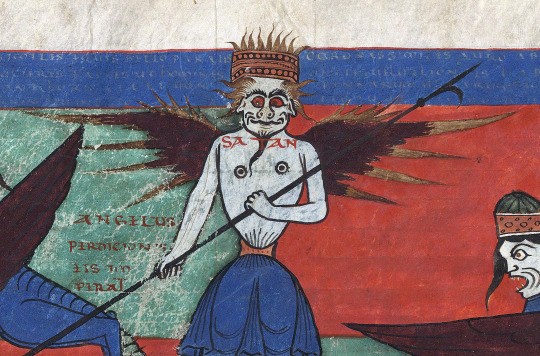

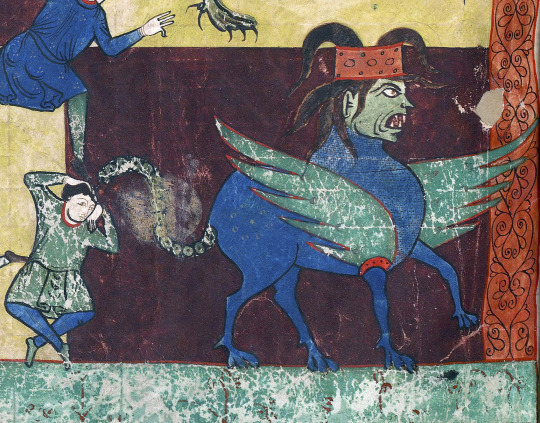
Abaddon and the locusts
(Revelation 9:7-11)
Beatus of Liébana, Commentaria in Apocalypsin (the ‘Beatus of Saint-Sever’), Saint-Sever before 1072
BnF, Latin 8878, fol. 145v
2K notes
·
View notes
Photo



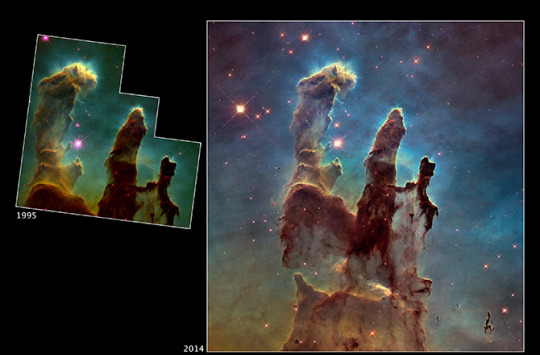
Cosmos Snaps Into Dazzling Focus With Hubble Upgrade
Spending 25 years in orbit allows the NASA/ESA Hubble Space Telescope investigators a huge advantage: they can watch the sky change over time. See how some of Hubble’s most famous pictures evolved, particularly after astronauts on the last shuttle visit (in 2009) installed the Wide Field Camera 3 and Advanced Camera for Surveys on the telescope.
See the photos here!
4K notes
·
View notes
Photo
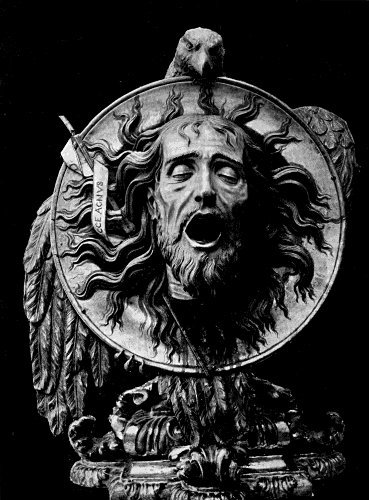
The Head of Saint John the Baptist, the Forerunner of Our Lord
271 notes
·
View notes
Photo

If you like this post, check out psych2go. You can also join our community site here and make some friends: Psych2go.net
2K notes
·
View notes
Photo
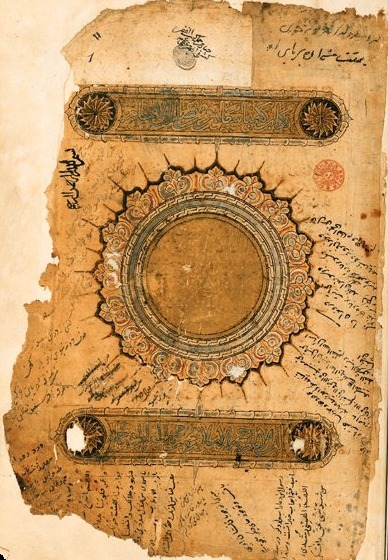
Kimiya-yi sa'ādat (The Alchemy of Happiness) – a text on Islamic philosophy and spiritual alchemy by Al-Ghazālī (1058–1111).
421 notes
·
View notes
Photo




Work, then lunch with friends on square.
Checked on the “almost fairy ring” when I got home, after more rain, the caps are twice as big as they were yesterday.
Socrates is usually the first to greet me when I get home.
106 notes
·
View notes




